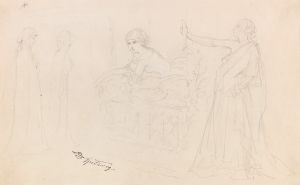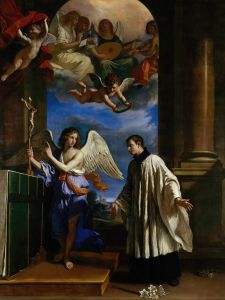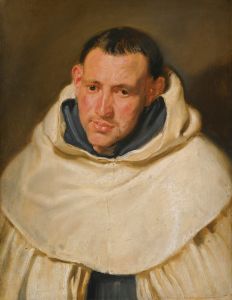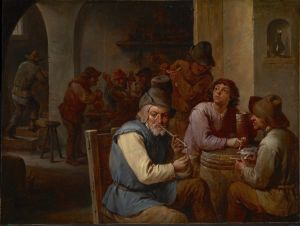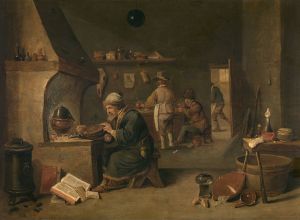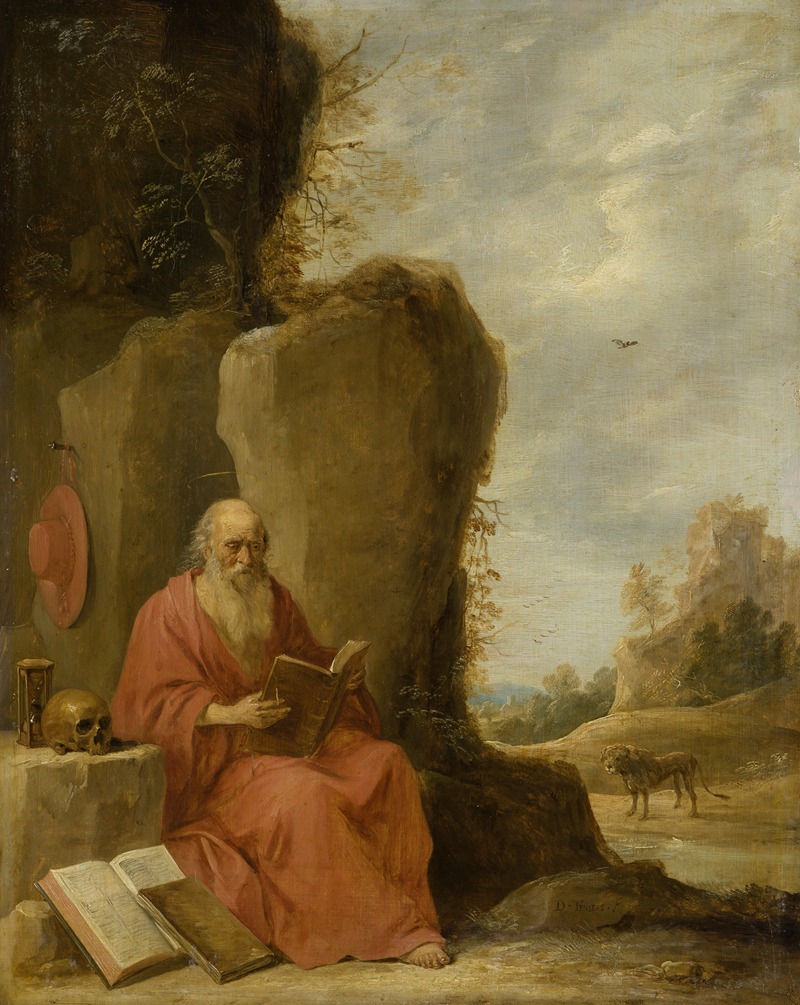
St Jerome in the Desert
A hand-painted replica of David Teniers The Younger’s masterpiece St Jerome in the Desert, meticulously crafted by professional artists to capture the true essence of the original. Each piece is created with museum-quality canvas and rare mineral pigments, carefully painted by experienced artists with delicate brushstrokes and rich, layered colors to perfectly recreate the texture of the original artwork. Unlike machine-printed reproductions, this hand-painted version brings the painting to life, infused with the artist’s emotions and skill in every stroke. Whether for personal collection or home decoration, it instantly elevates the artistic atmosphere of any space.
David Teniers the Younger, a prominent Flemish Baroque painter, is known for his diverse range of subjects, including landscapes, genre scenes, and religious themes. One of his works, "St Jerome in the Desert," exemplifies his ability to blend religious iconography with detailed landscape painting. Although specific details about this painting are limited, Teniers' broader body of work and his artistic context provide insight into its significance.
David Teniers the Younger was born in Antwerp in 1610, into a family of artists. His father, David Teniers the Elder, was also a painter, and Teniers the Younger was trained in his father's workshop. He became a master in the Antwerp Guild of Saint Luke in 1632. Teniers' career flourished, and he became a court painter for Archduke Leopold Wilhelm of Austria, the governor of the Spanish Netherlands. This position allowed him access to the archduke's extensive art collection, which influenced his work.
"St Jerome in the Desert" is a depiction of Saint Jerome, a Christian scholar and translator of the Bible into Latin, known as the Vulgate. Jerome is often portrayed in art as a hermit in the wilderness, reflecting his time spent in the Syrian desert. In Teniers' painting, St Jerome is typically shown in a contemplative pose, often accompanied by symbols such as a lion, a skull, or a Bible, which emphasize his scholarly and ascetic life.
Teniers was known for his meticulous attention to detail and his ability to capture the subtleties of light and texture. In "St Jerome in the Desert," these skills would likely be evident in the rendering of the natural landscape, which serves as a backdrop to the saint's solitary figure. The desert setting would be depicted with careful attention to the play of light and shadow, creating a serene yet dramatic atmosphere that underscores the theme of contemplation and spiritual reflection.
The painting reflects the Baroque era's interest in religious themes and the use of natural settings to enhance the emotional and spiritual impact of the subject. Teniers' work often includes a harmonious blend of figures and landscapes, showcasing his ability to integrate human presence within the natural world seamlessly.
While specific information about the provenance or current location of "St Jerome in the Desert" by David Teniers the Younger is not readily available, his works are held in numerous prestigious collections worldwide. Museums such as the Prado Museum in Madrid, the Louvre in Paris, and the National Gallery in London house examples of his art, indicating the widespread appreciation and recognition of his contributions to Baroque painting.
In summary, "St Jerome in the Desert" by David Teniers the Younger is a testament to the artist's skill in combining religious iconography with detailed landscape painting. Through his depiction of St Jerome, Teniers captures the essence of the saint's contemplative life, set against the backdrop of a meticulously rendered natural environment. This work exemplifies the Baroque era's fascination with religious themes and the integration of human figures within the natural world.






